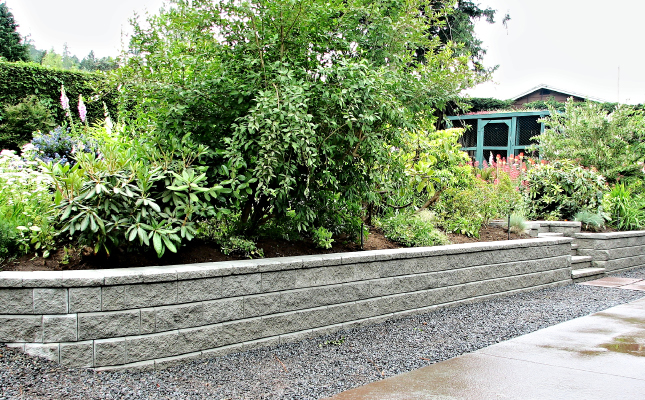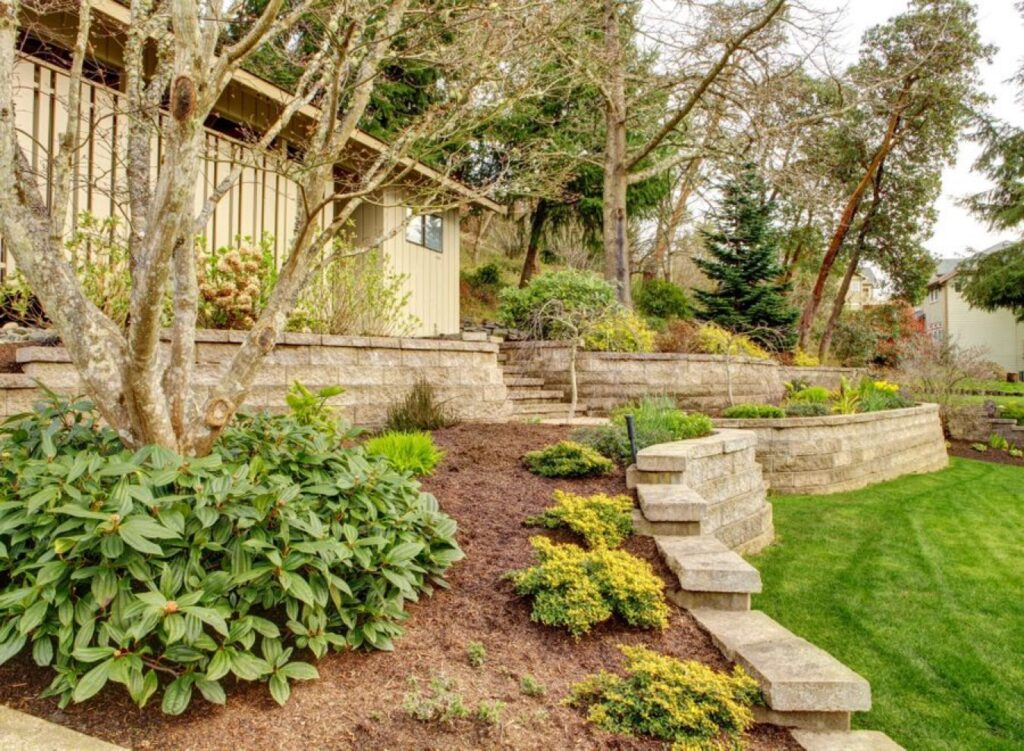
Find a local landscaper
- Inspiration /
- Outdoor projects /
- Gardening & landscaping /
- Fixing or replacing...
Fixing or replacing your retaining wall
It might be time to replace, or simply fix your garden's retaining wall
Is your retaining wall starting to look a little iffy, but you’re not sure whether it needs to be replaced completely, or simply repaired? As long as you’re willing to put in a little time and effort, you can get a few extra years out of that retaining wall if you apply some simple repairs. Alternatively, sometimes it’s better to start again. Here, we’ll take you through how to do both.
When to repair your retaining wall
There are many warning signs that you can keep an eye out for in order to determine whether it’s time to make major repairs to your wall. With timber retaining walls, you’ll often see rotting or warping of the wood, as well as damage caused by insects, especially termites. In the case of concrete retaining walls, you might see cracking and crumbling or damaged stones, and the same goes for brick and mortar retaining walls. Additionally, if you notice that an entire section of wall is leaning, then it’s definitely time to remove excess soil, check the fortification, and ensure that your retaining wall won’t fall over.

How to fix your retaining wall repair
As with most general repair work, the first step is to figure out whether you have a problem early on. If you’d like to take a stab at fixing your retaining wall yourself, here are a few tips:
- In the case of cracking, try to establish whether it’s caused by a structural problem or if it’s a minor fix. Minor cracks can be mended easily with a concrete repair kit or epoxy.
- If you notice that the mortar between bricks is crumbling, try removing as much loose debris as possible (without destroying the wall) and filling in the holes with newly mixed mortar.
- With rotting and warped timber retaining walls, all the damaged wood needs to be removed and replaced with brand new boards. Also make sure that it’s properly treated to withstand the moisture from the soil.
- If you have a smaller retaining wall and you notice some leaning, then you might need to dismantle it as much as you can and check that the footings are secure enough to provide a proper foundation.
Whatever repairs you undertake, you’ll likely have to displace the soil and plants behind your retaining wall in order to complete them effectively. The last thing you want is pressure from the soil pushing your wall over entirely while it’s at its weakest during the repairs.
Retaining walls handle a lot of wear and tear, so they may need replacing periodically. If you or your builder has determined that your retaining wall has reached the point where it’s past repair, then it’s best to remove it and install a new one. To help you get started, here are a few basics you’ll need to know.
Should you replace your retaining wall
You’ll need to replace your retaining wall if it starts leaning in another direction, if it starts crumbling or structurally failing, or if it appears to be unable to hold the weight of the soil. In addition, timber retaining walls are prone to warping, while concrete ones can crack and brick ones can come loose. If any of these conditions apply to your wall, it’s a sure bet that you’ll need to remove the wall and replace it with a new one. If you’ve noticed deterioration but you’re not sure if it’s progressed beyond repair or not, call in a professional to diagnose the problem and advise you on whether or not a replacement wall is necessary.
Contact local landscaping experts
Replacing your retaining wall tips
Here are a few of the basic steps you’ll need to follow to replace a retaining wall:
- Remove the existing wall. You’ll need to be careful not to disturb or unsettle the soil too much, so remove the wall slowly and cautiously. In addition, the wall may be prone to caving in during removal, so you may need to dig away excess soil and add stakes, bricks, stones or other supports to prop it up as you’re working. This helps to stabilise the process.
- After the wall has been removed, you’ll need to lay the foundations for the new wall, and then add any necessary drainage features.
- After building the new wall, you’ll need to wait for it to settle, then you can backfill the area with soil if necessary.
Is it time to call a professional?
Professional landscape architects can use their experience and training to help you determine where the problems lie and how best to fix them. Unless you have building experience, removing and replacing a retaining wall isn’t really a DIY type of project. In fact, it can potentially be dangerous because the wall or the soil may cave in or collapse while you’re working. Because of the complexity and difficulty of this type of job, you’ll want to bring in professional help.
A specialist can also assess the site and soil content, and use the information to construct a durable, safe wall that will effectively do the job. By calling in a professional to help, you’ll be able to replace your crumbling retaining wall with a new structure that should last for many years to come.
Related posts
How much will your job cost?
The Oneflare Cost Guide Centre is your one-stop shop to help you set your budget; from smaller tasks to larger projects.



